The home of Juneteenth: Texas town that’s behind the holiday where America’s last slaves were emancipated
Nationally, Americans are celebrating Juneteenth for the fourth year in a row, but in Galveston, Texas, families have been celebrating the date in a festive way for generations.
The date, which became a federal holiday in 2021, commemorates the official end of slavery in Galveston in 1865, two years after the Emancipation Proclamation ordered the freeing of Black people still in the hands of members of the Confederacy.
Members of the Texas city’s Black community say the holiday has always been recognized and celebrated by Black people in the area — in parks and backyards, where families and friends gathered to barbecue and tell stories.
Roy Collins, 67, of Galveston, said NPR that he “has newspaper records of my great-grandfather — who would have been 25 years old by that time, in 1885 — and that he was given the role of reading the Emancipation Proclamation at that celebration.”
Members of the City of Galveston government unveil new signage that will be installed on the highway entering the island to recognize the place as the birthplace of Juneteenth
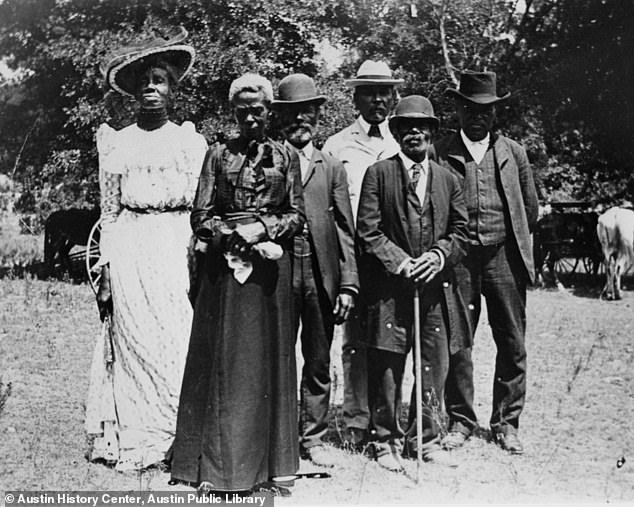
An Emancipation Day celebration held on June 19, 1900 in Austin, Texas. Texas remained under Confederate rule even after the Emancipation Proclamation went into effect in 1863
Every year the city hosts a reading of General Decree No. 3, which forced the release of those still enslaved.
Usually the reading is accompanied by a march that mimics some of the early celebrations of freedom. Gala events and dinners are also held in the city.
Juneteenth is also a holiday meant to support and honor Black-owned businesses.
Candace Reese’s family history in Galveston dates back to a time when her ancestors were slaves on Michel Menard’s estate – Menard founded Galveston.
She says, “Juneteenth is about economic empowerment for those who are the descendants of those who were enslaved, because there is still so much ground for each generation to make up.”
Torin Collins told the outlet that she also grew up celebrating the now national holiday.
Her family in Texas owns a former Confederate plantation. Every year, she said, her father throws a giant Juneteenth celebration to come together and tell the community about its history.
“I grew up knowing how important Juneteenth is and how much we need to remember history, and where we started, and that dark chapter that everyone tries to sweep under the rug,” she said.
The Emancipation Proclamation followed on January 1, 1863 came into effectdeclaring that all people in the United States would be free.
African Americans gathered in churches and private homes across the country, waiting for the words of the law to finally spread throughout the country.
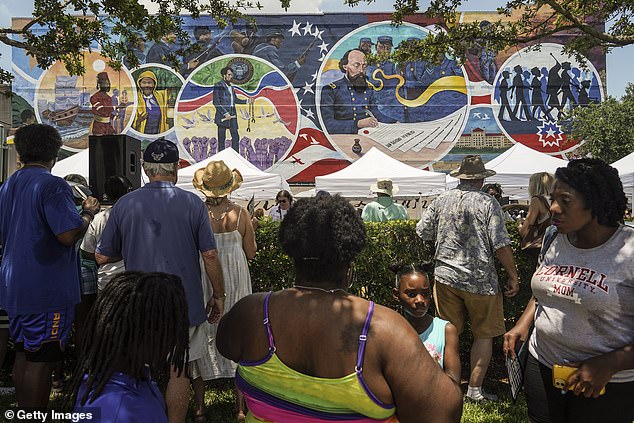
People gather to celebrate the opening of the mural as part of the Juneteenth Legacy Project commemorating the end of slavery in the United States on June 19 in Galveston, Texas
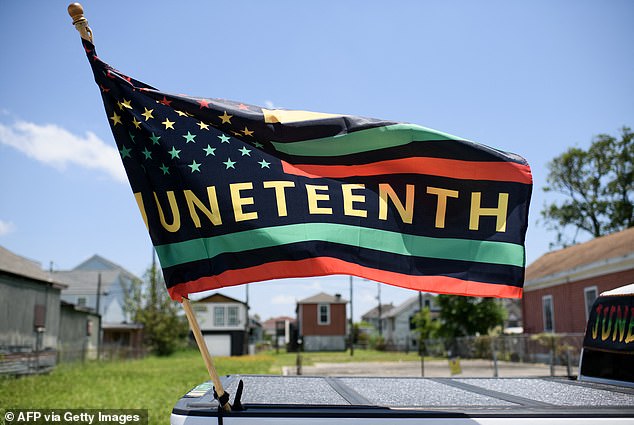
On June 19, 1865, Union troops landed on Galveston Bay to grant freedom to the 250,000 black Americans in Texas.
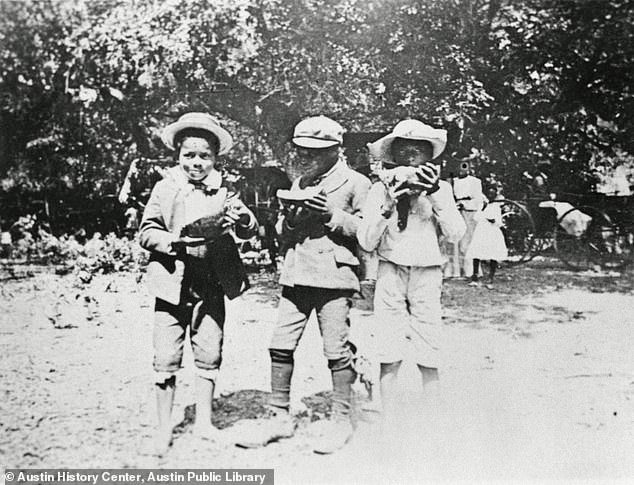
Group portrait of three young African-American boys during Emancipation Day celebration, June 19, 1900
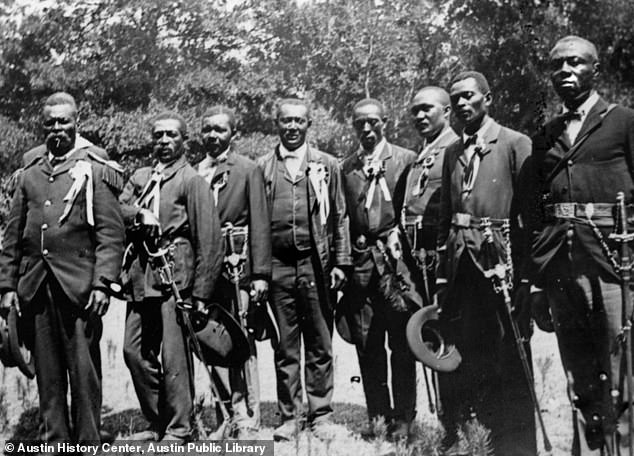
Eight men in suits with ceremonial swords on their hips, June 19, 1900. These were the “officers of the day” during the Emancipation Day celebration on Juneteenth, which is still imitated in some capacities in select parts of Texas
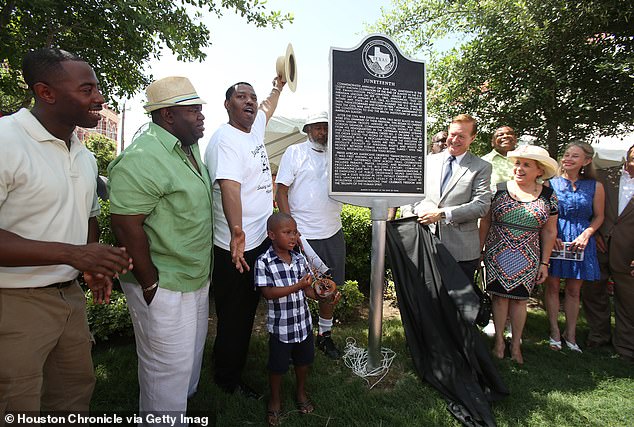
Juneteenth Historical Marker is unveiled following the dedication ceremony hosted by Galveston Historical Foundation and Texas Historical Commission on Juneteenth ten years ago
At midnight, black soldiers marched on southern plantations carrying small copies of the Emancipation Proclamation, spreading the news of freedom everywhere.
But the proclamation did not apply to everyone in the United States. It could not be implemented in areas still under Confederate control.
And so slaves in Texas – the westernmost point of the Confederacy – would remain slaves for another two and a half years.
On June 19, 1865, Union troops reached Galveston Bay, where they announced that the more than a quarter of a million enslaved black people in Texas were free by executive order.
